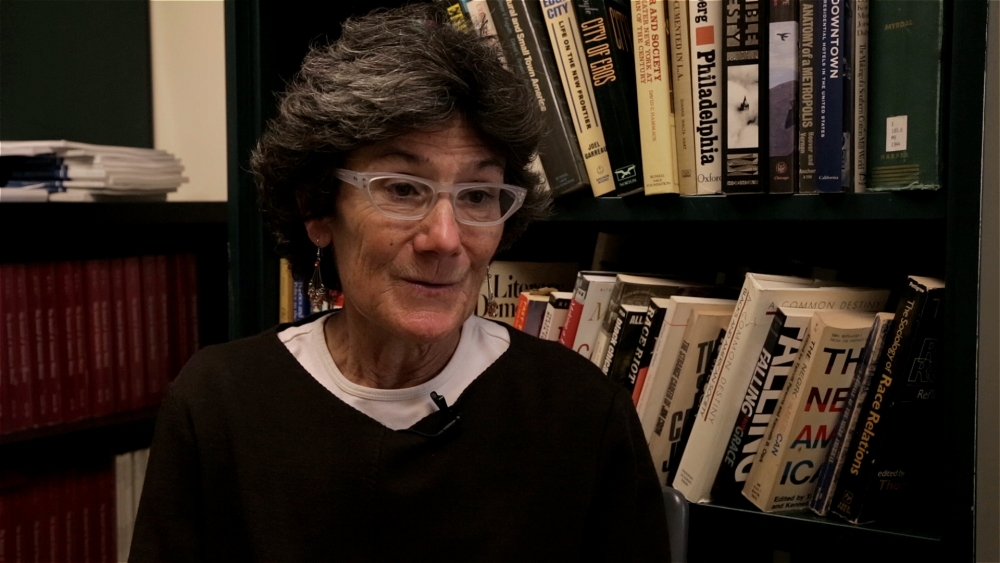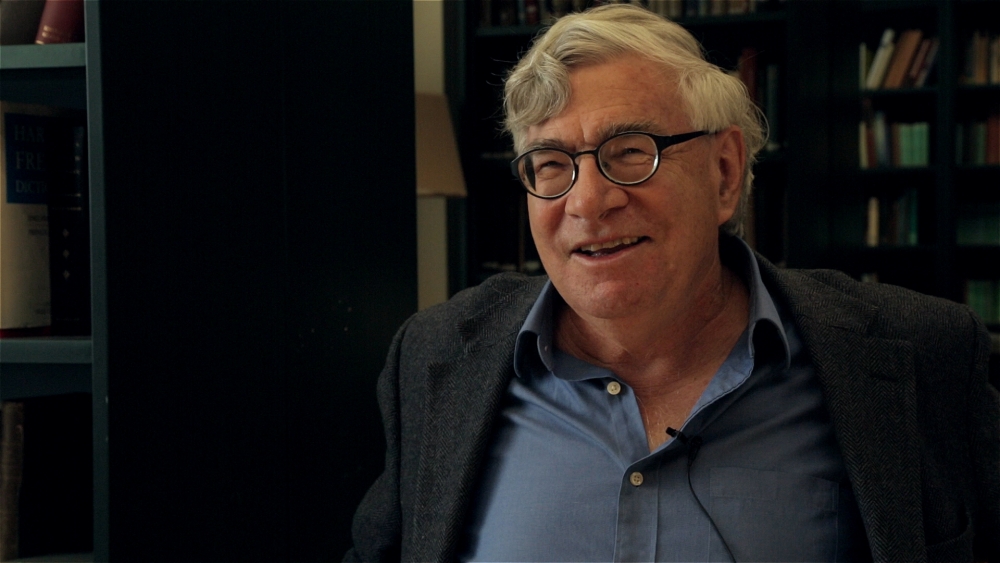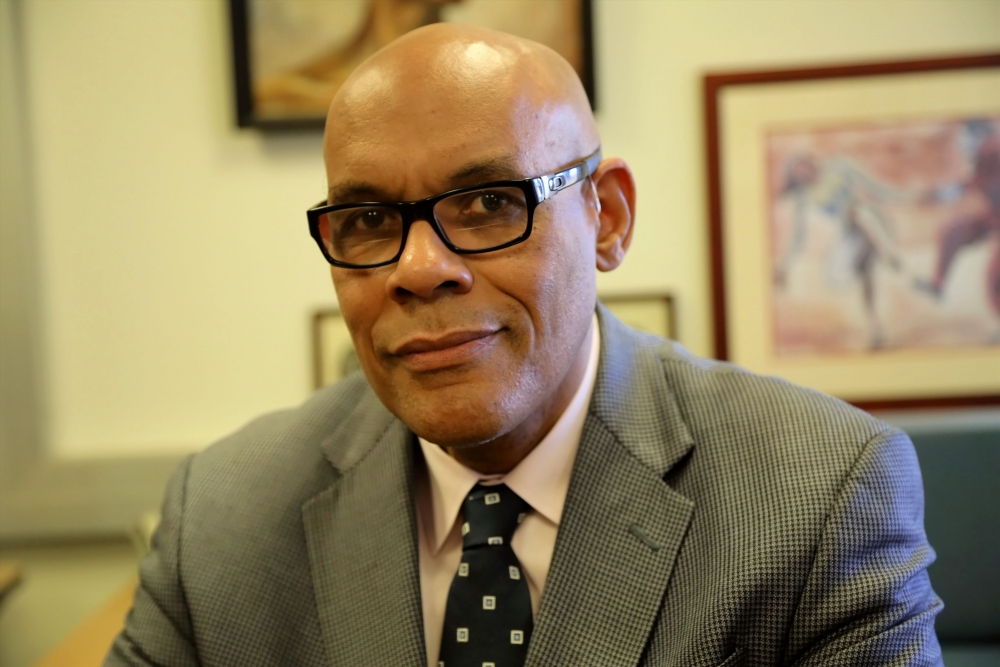‘We Must March’



One person, one vote. Democracies are rooted in that simple premise. But for African Americans, access to the ballot box — even 100 years after the Civil War — was a hard-fought and painful victory fully realized only with the passage of the Voting Rights Act of 1965.
And that landmark legislation, signed into law by President Lyndon B. Johnson, was, in turn, the result of dramatic events that took place in Selma, Alabama, five months earlier when armed officers attacked peaceful civil rights demonstrators as they attempted to cross the Edmund Pettus Bridge on a march from Selma to the state capital of Montgomery.
That demonstration, which took place on March 7 — now universally referred to as “Bloody Sunday” — was led by James Bevel of the Southern Christian Leadership Conference and John Lewis of the Student Nonviolent Coordinating Committee. It was one of three marches that comprised the Selma Voting Rights Campaign. The second, led by Martin Luther King Jr., who had been away from Selma but returned after the horrific attack on the first march, began on March 9. The third, also led by King and numbering approximately 25,000 participants, took place on March 21.
In the film “Selma,” a historical drama currently screening in theaters around the country, director Ava DuVernay tells the story of the Selma-to-Montgomery marches and their immense contribution to the Civil Rights Movement. The film, nominated for two Academy Awards, features David Oyelowo as Martin Luther King Jr., Tom Wilkinson as President Johnson and Carmen Ejogo as Coretta Scott King.
As the 50th anniversary of the Selma Voting Rights Campaign approaches, UC Santa Barbara historians Nelson Lichtenstein and Alice O’Connor and Black Studies scholar Jeffrey Stewart discuss the historical significance of Selma in the ongoing struggle for racial equality as well as the film that brings it to life.
The Critical Moment
“Selma is, in many ways, the critical moment in the Civil Rights Movement because it gives African Americans the right to vote,” said Stewart, chair and professor of Black Studies. “Selma creates a different political environment in the South than had existed before. Political power came after Selma, and that political power translated into the possibility that Barack Obama could be elected president.
“Without Selma, without the Voting Rights Act that followed, we wouldn’t have a black president,” he continued. “We live in the world created by Selma.”
One of the film’s greatest strengths, according to Stewart, is David Oyelowo’s performance as Martin Luther King, Jr. “It’s a particularly challenging role because King was a sort of spiritual father, and I think Oyelowo handles extremely well those scenes when King has to comfort people who have lost loved ones largely because of his campaign,” he said.
“And at the same, Oyelowo gives very powerful speeches — speeches that are even more remarkable when we learn that the King family wouldn’t release the actual transcripts to be used in the film,” Stewart continued. “So these are speeches that were written by the director and her team specifically for these scenes. And Oyelowo delivers them so powerfully that at times it almost seems that they’re more powerful than the actual speeches Martin Luther King gave. Oyelowo’s performance holds the whole movie together.”
A Rarity in American Cinema
In the summer of 1966, Lichtenstein, the MacArthur Foundation Professor in History at UCSB, was working in Selma as a reporter for the Southern Courier, a civil rights newspaper funded by northern liberals. “My job was to dig up stories about the ongoing Civil Rights Movement both in Selma itself and in Dallas County. “My impression was that 15 months after the Selma marches, a lot had changed,” Lichtenstein said. “The Civil Rights Movement was continuing, though it was entering the black power phase.”
What Lichtenstein found most remarkable about the film “Selma” is its focus on the internal life of a social movement. “That’s quite rare in American cinema, and I thought it was done well,” he said. “King was at the center, but not absolute center. And it was clear he had made mistakes and was subject to insecurities. There was a very good sense of that.”
O’ Connor, professor of history, agreed. “The film captured with amazing economy and subtlety a lot of the tensions within the movement,” she said. “Selma took place in March of 1965 and the Voting Rights Act was signed in August, so we think about the connection between those two things. And if you’re reading about it historically, it seems like a pivotal moment, a turning point, a part of the strategy — they knew what they were doing, they knew the attention they would get, they knew they would encounter violent resistance, but they were willing to do it because they also knew there would be cameras there and the world would be watching.
“Of course, there’s a degree of that going on, but the notion that it was carefully planned out, that they knew exactly what they were doing, doesn’t capture the human dimension of the experience,” O’Connor continued. “Here I thought the film did an excellent job of showing the degree of uncertainty, contingency, and not really knowing what was going to happen, and then getting across the frustrations people felt at the time.”
Examining the social movement as a whole rather than focusing solely on the individual leaders who made it happen is one of the film’s great strengths, according to O’Connor. “Among other things, the film brilliantly captures the incredible risks the local residents and activists in Selma were taking in efforts to exercise basic citizenship rights, and the dignity and persistence they showed in the face of threats to their lives and livelihoods,” she said.
“There’s a kind of narrative in history, and to some degree among people who write about this whole set of issues and the longstanding struggle for racial equality, that freedom, as in voting rights, was the easy part,” O’Connor went on. “The tough part, according to this narrative, is ‘real’ equality — in jobs, economic justice, social relations. The implicit critique is that in pursuing the Voting Rights Act, and the Civil Rights Act of 1964, they went for the slightly easier stuff.
“And what this film gets across,” O’Connor continued, “is that all those things go hand in hand. You cannot separate them from one another. People who were engaged in the struggle knew that. It gives the lie to the notion that the struggle over voting rights was the easy or symbolic thing to do. The struggle over voting rights as an aspect of full citizenship dates back to the Reconstruction period, and had not been resolved 100 years hence. And it continues today.”
Poetic License
All three scholars acknowledge inaccuracies in the films presentation of events leading up to the Selma marches, as well as the characterization of some of the larger-than-life figures. However, all three agree that none of these really detracts from the film’s overall value.
“Whenever I’m watching a film that’s historical and deals with historical events, I try to set aside my historian’s cap because if I watch a film too closely for how it depicts those events, invariably I end up squirming a bit because they have to get a huge amount of information across in ways that a historian who’s used to reading the details and getting things fully contextualized sometimes finds a little awkward,” said O’Connor.
And this film is no different from others in that regard. “They quickly set the context by compressing a lot of events that took place over a long period of time,” she said. The role of the Student Nonviolent Coordinating Committee and the campaign for voting rights in the Freedom Summer of 1964 is one example of a key part of the struggle the film recognizes, but more in passing than in its full significance, O’Connor added.
Noted Lichtenstein, “Some things weren’t factually correct — LBJ and what’s going on in Washington, and also [J. Edgar] Hoover and the FBI. The FBI business and this famous incident in which the FBI recorded King having an affair and sending the tape to his house occurred in the fall of 1964, before the whole Selma campaign. Then they compounded the error by having a scene in which LBJ directs his administration to get [FBI director] Hoover on the case. But really it was the Kennedys who allowed Hoover to move forward because of the fear of communism, and then Hoover went too far.”
The chronology and motivation, Lichtenstein said, is presented incorrectly. “Second, and more important, is that the movie makes a big point that LBJ has his own legislative agenda of which voting rights is not at the very top. That’s true — he wanted to get education and Medicare legislation passed first — but he wasn’t pushing voting rights off to the distant future,” he explained. “Actually, at the very beginning of his term — and the moment King was beginning in Selma — LBJ’s administration was drafting legislation, and he was participating in complicated negotiations with Republican Everett McKinley Dirksen and leaders on the other side. They were doing it.”
Despite the rewriting of some of King’s speeches, Stewart believes the film captures “incredibly well” the sense of the time and frustration and the feeling black people had at that time. “There’s been criticism of the portrayal of LBJ,” he noted, “and I think if this were a film called ‘The Voting Rights Act’ you’d have to say it underrepresented LBJ’s role. He was certainly the critical figure in moving forward and getting the Voting Rights Act passed. So one could say, OK, more portrayal behind the scenes about Johnson. But that would distort the film. Because this is a film about Selma.”



